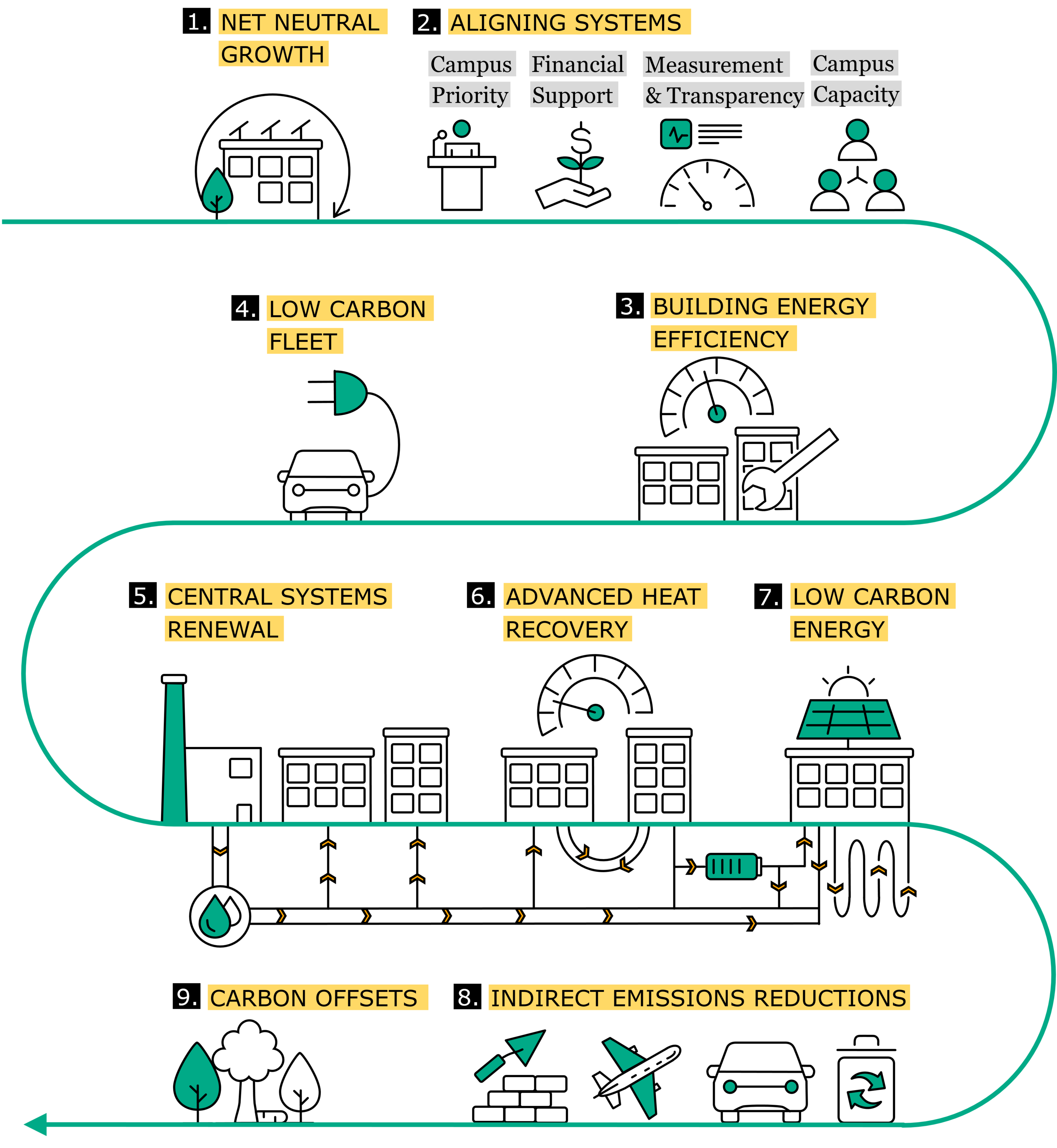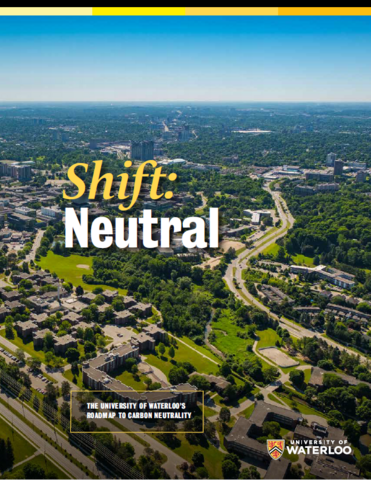
Overview
Shift:Neutral is Waterloo's first institutional climate action plan. It lays out key directions and actions that will be mobilized across campus to enable a shift to carbon neutrality by 2050 and increase the energy efficiency of the University campus.
Core pieces of the plan include:
-
Short and medium-term targets to build momentum:
-
17.5% reduction by 2025
-
35% reduction by 2030
-
-
A long-term roadmap of the types of changes needed to reach carbon neutrality and improve energy efficiency
-
46 specific actions which can help reach short-term targets and build foundations for long-term achievement
-
A review framework
Roadmap to carbon neutral
- Net neutral growth is achieved through stringent energy efficiency requirements for all new buildings and major renovations
- Systems are aligned to support carbon neutrality, including prioritization, financial support, monitoring and transparency, and capacity
- Energy demand from current buildings is reduced through efficiency measures, including behavior change, scheduling, envelope upgrades, recommissioning and environmental monitoring, and lighting and equipment updates
- Waterloo’s fleet is decarbonized through optimization and accelerated adoption of low-carbon vehicles
- With reduced energy demand, centralized infrastructure is right-sized as part of renewal, including conversion of steam to hot water
- Advanced heat recovery fully optimizes district thermal energy between buildings, including management of simultaneous heating and cooling
- Energy used on campus comes from low-carbon sources, including renewables and geothermal
- In parallel, non-energy/indirect emissions from embodied carbon, business travel, commuting, and waste are reduced
- Remaining emissions are offset or sequestered

Community Collaboration
Waterloo's direct work on campus emissions reductions are also done in collaboration with numerous community partners. The University is one of the largest sources of emissions in the Region of Waterloo, given its size and scale, and coordinating implementation will be critical both to campus and community success. Active efforts to share information about the University's efforts with the community and ensure ongoing collaboration include, but are not limited to:
- Sharing publicly information about Shift:Neutral with key contacts in local area municipalities, and through representation of local mayors and the Regional Chair on the University's Board of Governors
- Participation in Sustainable Waterloo Region's Impact Network, which brings together over 80 employers of varying sizes and industries to share common reporting, knowledge exchange, and mutual support for decarbonization efforts
- Representation on the ClimateActionWR Steering Committee and Community Leadership Table, to support broader regional implementation of the TransformWR Climate Action Plan
- Ongoing engagement with Waterloo Region Community Energy on multiple projects to coordinate campus and community energy planning and projects, including but not limited to district energy, geo-exchange systems, and building standards.
Progress
To see more:
How you can help
Students and employees are a critical part of Waterloo's journey. The plan will involve support through everyday actions like turning off lights and equipment, travelling sustainably, reducing waste, and sustainable purchasing. It will also expand opportunities to be more directly involved, for example through the Green Office, Green Labs, and Green Residence initiatives.
There are many existing initiatives underway already.
Find clubs, programs, training, and resources to get involved on campus.
How many emissions do you produce each year?
Visit the Project Neutral tool and input your information to estimate how many emissions you create and opportunities to reduce.
There are many tools and resources available to reduce emissions.
Check out the Sustainability Guide for tips and resources on and off campus.
